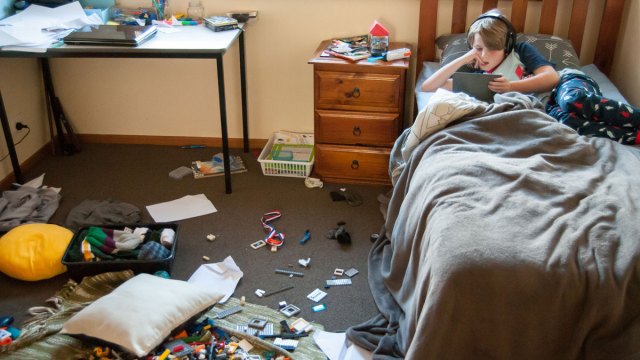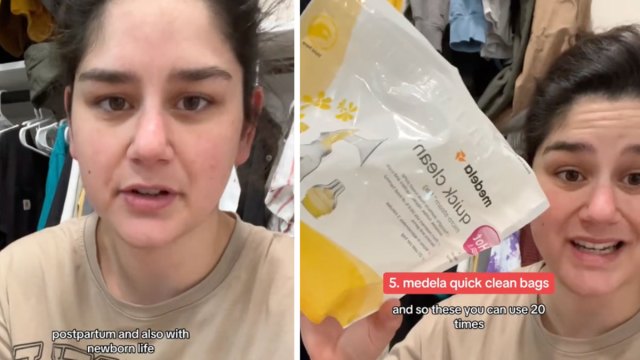When your kid is learning their first words, it can be tempting to encourage them to say “Mama” or “Dada” first, speak to them in baby talk, or encourage them to use cute words like “wawa” instead of water. But these common mistakes might be setting your toddler up for failure, according to a speech-language pathologist on TikTok. In a viral video, she explains three common mistakes parents make that might be hindering their littles’ language learning, rather than helping them.
“If you have a toddler between the ages of 12 and 24 months and you’re wondering why they aren’t saying many words yet, you might be making one of these common mistakes,” Moira, an SLP with Rooted in Language, explains in her video. “Did you know that as parents, our natural instincts when talking to our kiddos are often actually hampering their ability to quickly learn lots of words?”
@rooted.in.language Toddler not saying many words?? This may be why❗️🤔 #rootedinlanguage #talkingtips #toddlertalkingtips #speechtherapy #speechdelay #speechdelaytoddler #parenting #parentingtips #gentleparenting #raisingtoddlers #toddlertalking #slptips #languagedevelopment #languagedevelopmentinyoungchildren #languagedevelopmentbabies #babytalk #babytalking #firstwords #speechpathology
News to us! On to the common mistakes.
The first mistake, Moira explains, is repeatedly telling your toddler, “Say Mama” or “Say Dada.”
“Talk about dialing up the pressure,” she says. “Your child is much less likely to say a word when you’re demanding it of them.”
Instead, she says, you should regularly and consistently model the word you want your toddler to use. “Mama loves you,” “Mama’s gonna change your shirt.”
The second mistake to correct: no more baby talk. As Moira explains, research shows this is bad for toddlers learning about language. But it’s important to note that there’s a difference between baby talk—”the purposeful misarticulation of sounds to sound like you’re a small child”—and child-directed speech—”that sing-songy voice with lots of rise and fall in your intonation, like Miss Rachel.” Child-directed speech is good and helps kids learn to talk. Baby talk is not.
And finally, the third mistake: repeating single words your toddler says.
“Your baby says ‘truck’ and you say ‘truck.’ Boom. Done. You’ve ended the conversation,” Moira explains. “What are they supposed to say now? The interaction is over, and they haven’t learned any new words, because all you did was repeat a word they already knew.”
Instead, you should build on the conversation: “Yes, truck. Blue truck. That’s a big, blue truck! Beep beep! Bye-bye, truck!”
As Moira explains, “Apply these three tips consistently and watch your toddler’s language explode.”



















